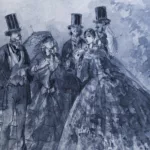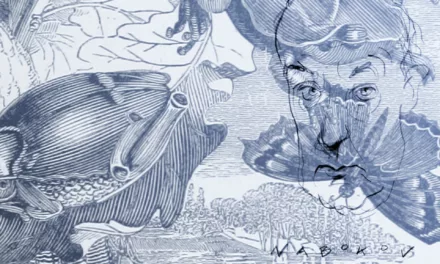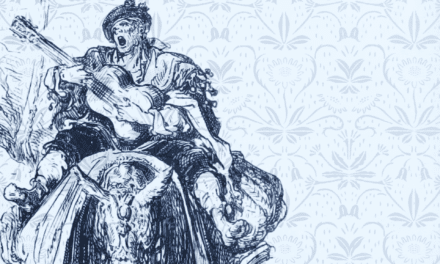
How to Create Interesting Characters Using the STEAL Method

When we talk about creating characters, we usually use three dimensions: physical, cultural, and socio-economic. On their own, these dimensions have a great influence and impact on a character’s behavior.
The main axis upon which any story revolves is the characters. Boring, flat, fake, and unreal characters can kill any interest that the reader has in the story. But complex, deep characters with personality and motivation are capable of elevating even the most simple plot.
There’s one characterization strategy that is a personal favourite: the STEAL method. But first, you need to know some key concepts.
Direct and indirect characterization
The characterization of a fictional character refers to the narrative process by which the qualities, personality, and characteristics are revealed and defined. Generally speaking, there are two clear types of characterization: direct and indirect.
Direct characterization
Direct characterization is when the writer explicitly tells the reader about the character’s traits. For example, the writer might directly state that a character is brave, kind, selfish, etc. Direct characterization leaves little room for interpretation and gives readers clear insight into the character’s personality.
Example: “Sarah was a compassionate woman who always went out of her way to help others.”
Indirect characterization
Indirect characterization involves revealing a character’s traits through their actions, thoughts, speech, appearance, and interactions with other characters. Readers have to infer the character’s traits based on these indirect cues.
Example: Instead of explicitly stating that Sarah is compassionate, the writer might show her stopping to help a stranger in need, listening empathetically to a friend, or volunteering at a homeless shelter. Through these actions, a reader can infer Sarah’s compassionate nature.
The STEAL method for indirect characterization
STEAL is the acronym for five modalities of indirect characterization: speech, thoughts, effects on others, actions, and looks. Let’s look at each one and how you can use them.
1. Speech
We all have different ways of speaking, and it is interesting to discover what our particularities say about us. A character with a vast and fluent vocabulary could be seen as intelligent and educated. A soft tone of voice and hunched stance might be characteristics of a shy personality.
What characters say and how they say it provides information about who they are, their interests, their moods, and their motivations.
Some characteristics of voice are tone, accent, and speed. These characteristics are easy to describe and provide the reader with great background about the character.

2. Thoughts
Narrating a character’s thoughts and feelings can be risky, since it is easy to fall into the trap of telling, not showing. The ideal way to narrate thoughts is through a first-person narrative point of view, and describing feelings using direct statements.
A character’s thoughts, whether through internal monologue or indirect dialogue, provide information about a character’s conception of the world around them, their ability to analyze events, and rationalize their experiences.
In the case of feelings, the ideal is to show how these feelings manifest. For example, instead of saying that a character is sad, describe how they display that sadness, like distress in their voice, slow speech, labored breathing, avoiding eye contact, a lack of appetite, or trouble sleeping.
Try researching what physical manifestations you can use to imply a feeling instead of using the direct term.
3. Effect on others
All our interactions have a positive, negative, or neutral impact on others. Motivation or affliction, interest or indifference, making others happy or sad; we can all create those feelings in others.
It’s the same in fiction. All interactions a character has with others should have a short, medium, or long-term impact.
The impact it has on others provides a significant amount of information regarding a character’s personality. A character with a strong and opinionated personality might rub people the wrong way, or cause discomfort when they enter specific social spaces. A character who is kind might be welcomed into all social spaces, but may also be taken advantage of by others who see that kindness as a weakness.
There should be no interaction between characters in which there is no clear effect on the characters around them. With these descriptions, readers can infer the personality traits of the characters.
4. Actions
A character’s actions and effects are linked as causes and consequences. Their behavior and way of treating others are acts that transmit information about their personality and objectives. It is through their actions that a character’s true personality emerges, and you can create nuances in those personalities by using contradictions.
For example, a character may think they are a good person, benevolent and shy, but when they are upset, they may hurt others with their words or actions. This contradiction between their behavior and their thoughts gives a character depth that the reader can infer, even though the character may not be consciously aware of it.
5. Looks
A character’s appearance allows you to give them agency and control over themselves. How they like to dress and express themselves through their physical appearance can say a lot about a character and who they think they are.
Describing a character should never be a random decision. What does the fact that your character prefers dark clothing convey? What are the reasons why they would dye their hair that color? Why do they dress formally when visiting family but dresses casually with their friends? You can also show changes in the way they dress as they learn and grow over the course of your narrative, showing subtle changes in their self-conception.
When you consider how a character looks, always try to consider whether it is intentional or accidental. Is it something they can control, and if they can, why do they choose that expression?
Summing up
Now that you have a grasp on the STEAL method, try reviewing your novel’s plot and identify if you are using these elements to characterize the main players. If not, how can you use this method to give them more depth and detail? Using a combination of direct and indirect characterization will really make your characters pop.































